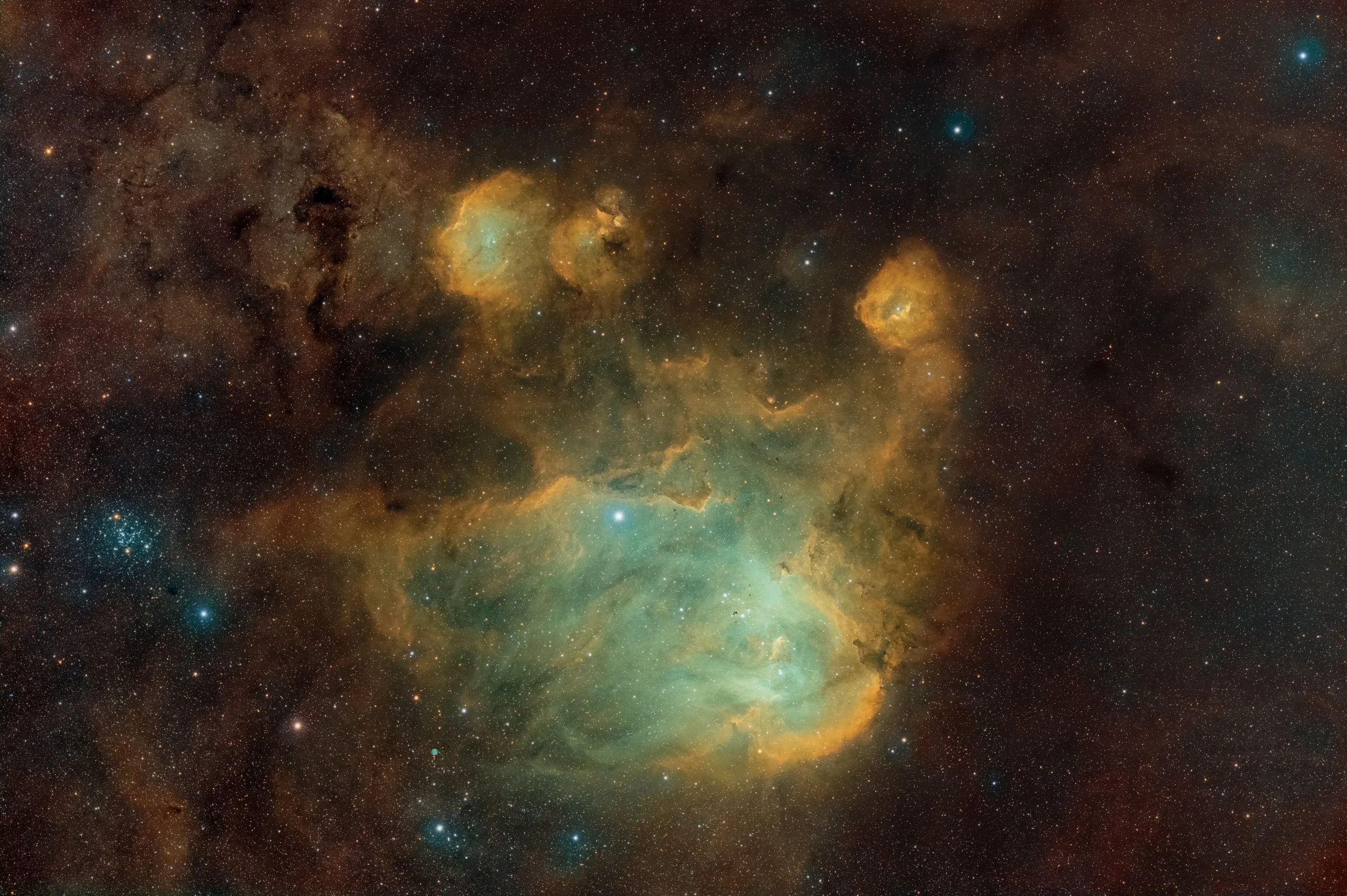
AAPOD2 Image Archives
The Running Cicken Nebula
The Running Chicken Nebula, also known as IC 2944, is a stunning emission nebula located in the constellation Centaurus, approximately 6,500 light-years away from Earth. This nebula is notable for its bright, glowing hydrogen gas, which is ionized by the intense ultraviolet radiation from nearby young, hot stars. The region is rich in star formation, with numerous young stars and protostars embedded within the nebula. One of the most striking features of IC 2944 is the presence of Bok globules—dense, dark clouds of gas and dust that are potential sites of future star formation.
IC 2944's nickname, the Running Chicken Nebula, comes from the shape of the nebula, which some observers liken to a running chicken. The complex structure of the nebula, with its bright emission regions and dark dust lanes, makes it a favorite target for both amateur and professional astronomers. Its location in the southern sky provides a unique and spectacular view for observers in the Southern Hemisphere.
Northern Lights over the Po Valley
Aurora week continues! Indeed, the mesmerizing Northern Lights graced the Po Valley following a powerful solar storm this weekend. This rare event brought the captivating aurora borealis to an area not typically associated with such celestial displays, adding an extra layer of awe and wonder to the night sky above the valley.
The Small Magellanic Cloud
The Small Magellanic Cloud (SMC), a celestial jewel in the southern hemisphere, graces the night sky with its ethereal presence. Nestled among the distant stars, this dwarf irregular galaxy, a satellite of our Milky Way, captivates astronomers and stargazers alike. With an approximate distance of around 200,000 light-years, the SMC unveils a tapestry of stellar marvels, from sprawling nebulae to clusters of newborn stars. Its unique position allows astronomers to study cosmic phenomena with a distinct perspective, offering insights into the evolution of galaxies and the interplay of celestial forces.
Solar filament in h-alpha
Image Description and Details :
The picture, taken on August 6th 2020 from Casalgrande (Italy), shows a large filament in the chromosphere
Telescope: Tecnosky acro 152/900mm at 3600mm of focal length Mount: Sky Watcher NEQ 6 ProCamera ZWO ASI 174MMFilter: Daystar Quark Chromosphere Average seeing and transparency conditions
Copyright: Alessandro Carrozzi






